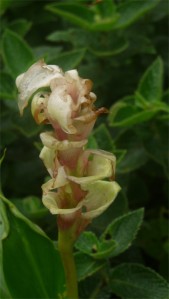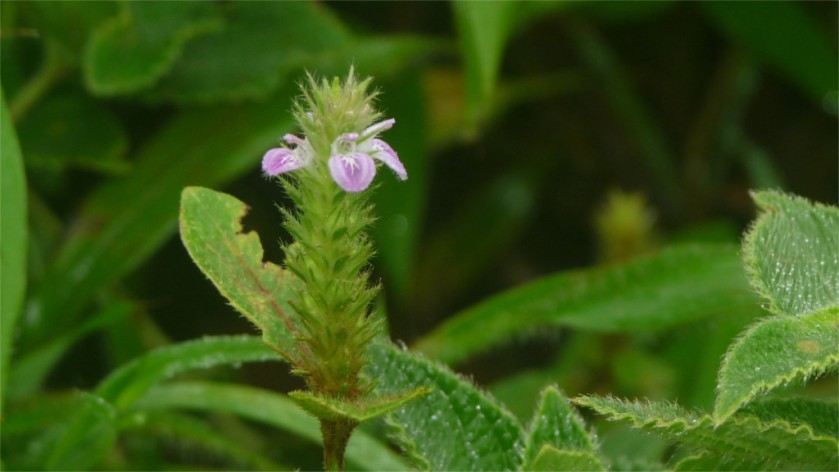When I first saw Karambal many years ago in Lonavla, I thought the petals had fallen off it. It was only when I spotted the third or fourth plant that I understood what the matter was. Flowers do not burst open all together on the spike. One flowers and withers before the next one opens. Karambal (Justicia procumbens, aka water willow) is common in the Sahyadris. It seems to flower between late July and perhaps September. I was surprised to find that its native range extends all the way east to China and Japan and southwards through Java to Australia. I’d found some years ago that is used in folk medicine in India. But it seems to be used in Chinese folk medicine too. Not surprisingly, a large part of the recent literature on its anti-cancer and anti-HIV action comes from China.
When I saw the flowers in my walks around the Vaitarna lake, I was probably at its highest recorded reach. Late in the monsoon, when the rains have abated, I like to hang around these flowers. They are magnets for several kinds of showy butterflies. Now, quite by chance I saw a different pollinator: a fly. Whenever I see a flower with interesting colour patterns on one of the petals, I’m virtually certain that it is a landing pad for pollinators. This sighting certainly indicates that could be true. I’m pretty certain that under black light the petal will have more complex patterns. Both flies and butterflies can see in UV. I should try that out.
The literature on the origins of this species is hard to trace. The genus Justicia contains a little less than a thousand species, all tropical. They differ clearly in shape and colour. Even the microscopic morphology of pollen is very diverse. It seems that the genus may fragment under the gaze of modern techniques. It is a little too early to answer the question that I was interested in. But I will go out on a limb here and speculate. From the distribution of the plant, it is quite likely that it originated in the Sundaland, and entered India some time in the last 50 million years. I’ll continue watching the literature on the Acanthus family, to which Karambal belongs.





